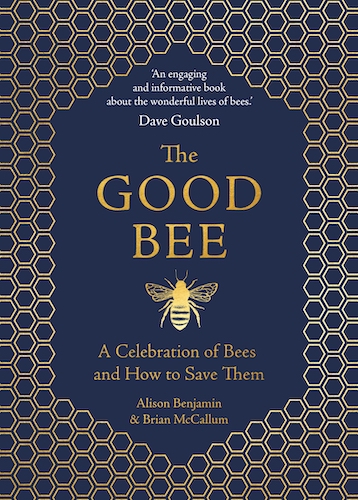
When I was a young boy, my widowed grandmother’s gentleman friend, Uncle Chuckie, kept bees in his spacious garden. When we visited his house, honeybees would occasionally fly into the living room. To my sister’s and my astonishment, Uncle Chuckie would gently grasp an errant bee between thumb and forefinger, inspect it closely, and, before releasing it back into the garden, announce something along the lines of, “Ah, yes! This one’s named Henry!” My sister and I totally believed Uncle Chuckie could identify his bees individually, not even realising the bee in question was far more likely to be a Henrietta than a Henry.
Beekeeping is going through something of a renaissance at the moment. Everyone seems to be at it. Even my lifelong friend Carolyn, who occasionally used to visit Uncle Chuckie with us. People’s rediscovered interest in apiculture isn’t, as far as I can tell, driven by an increased demand for honey or beeswax. It seems to have far more to do with people realising, worldwide, bees are in trouble, and that, for our own good, we should be doing more to help them.
Alison Benjamin and Brian McCallum are one of many couples who have been bitten by the beekeeping bug. Their engaging, charmingly illustrated book is packed full of interesting facts about both wild and domesticated bees. To be honest, I had no idea there were so many types of bee. Thousands of species in fact. In addition to the familiar bumblebees and honeybees, there are, among others, stingless bees, cuckoo bees, carpenter bees, mason bees, leafcutter bees, and ivy bees. I vaguely recalled having read somewhere about sweat bees that obtain moisture and minerals from humans’ and other animals’ perspiration, but vulture bees that make a form of honey from carrion were completely new to me. How long before someone incorporates these amazing creatures into a macabre horror story?
As well as exploring the many different types of bees, their produce, and how we put it to use, Benjamin and McCallum describe the crisis bees and other insects are going through. It’s the same, sad old story: habitat destruction, disease, pesticides, and climate change. They also provide some useful advice about how we can do our bit for bees, and encourage them back into our gardens.
An enjoyable and entertaining read.
Recommended.
Postscript: After I’d finished reading this book, I decided to give my review copy to Carolyn as thanks for all the jars of honey she’s presented me with over the years. I also thought I’d take the opportunity to capture some of her bees on video to accompany this review. The exercise didn’t quite go according to plan…
Discosure: I received a free review copy of this book from the publisher.
- Buy this book from Bookshop.org (UK) and help tax-paying, independent bookshops.
- Buy this book from Amazon.co.uk
- Buy this book from Amazon.com